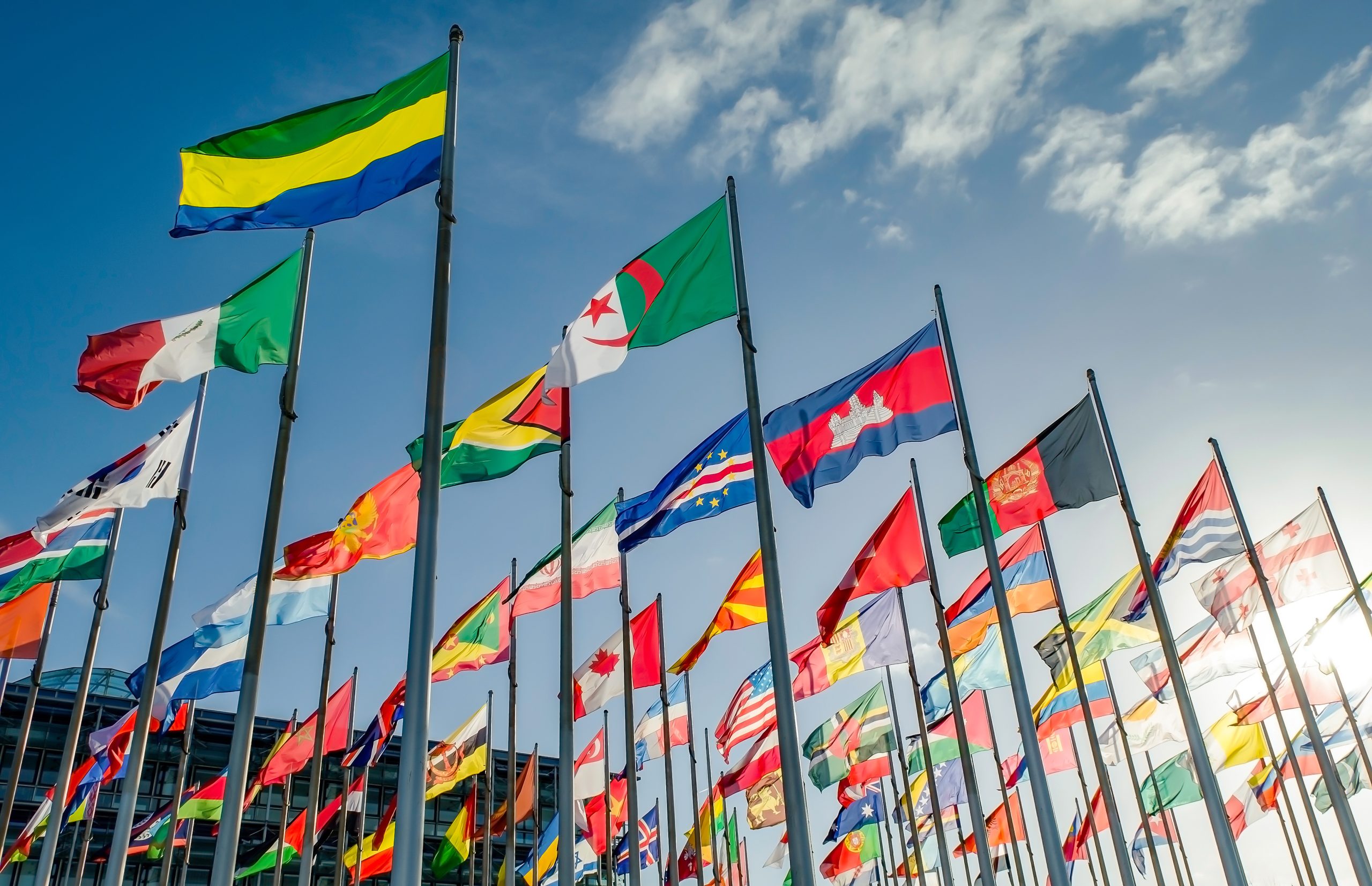Chapter 13: Working in a Global Environment
Chapter Learning Objectives
- 13.1 Explain the value of diversity in the workplace and how it contributes to innovation, collaboration, and organizational success. (SLO 5)
- 13.2 Apply inclusive communication and behavior strategies to interact respectfully and effectively with individuals from diverse backgrounds. (SLO 1, 2, 5)
- 13.3 Analyze how cultural, generational, and experiential differences influence workplace dynamics and team performance. (SLO 1, 2, 5)

Modern workplaces are increasingly diverse, with colleagues and clients hailing from various cultural, gender, and personal backgrounds. This diversity enriches organizations, fostering innovation, creativity, and a broader range of perspectives.
However, navigating these environments effectively requires awareness, respect, and adaptability. In this chapter, we delve into respecting differences, understanding international etiquette, and effectively engaging in workplace diversity training.
Respecting Cultural, Gender, and Personal Differences
Respecting individual differences is foundational to creating a harmonious and productive workplace. Acknowledging and valuing diversity fosters inclusivity and strengthens professional relationships.
Cultures shape perspectives, communication styles, and work habits. Try to approach these differences with curiosity rather than judgment. For example, in some cultures, direct communication is preferred, while others may emphasize subtlety. Treat each colleague as an individual rather than making assumptions based on cultural background. Instead of saying, “People from your country are always punctual,” focus on their individual behavior, such as, “I appreciate how organized you are in meetings.”
Communication values can be different for every type of work environment and culture. Tailor your approach based on cultural preferences. For instance, some colleagues may value relationship-building before discussing work, while others may prefer direct, task-oriented conversations. Or maybe your work environment values directness in text-message style communications vs. long and thorough emails.
Try to recognize your own assumptions about gender roles or identities. Use gender-neutral terms like “spouse” instead of “husband” or “wife” unless the individual has specified otherwise. Support the team as a whole by encouraging balanced participation and acknowledging contributions.
Each of our personal experiences influence how individuals approach problems, relationships, and work. Encourage different viewpoints in discussions and decision-making. Be mindful of personal circumstances that may affect workplace dynamics, such as caregiving responsibilities or health conditions. Offer flexibility when feasible. Celebrate the uniqueness of your team by acknowledging or celebrating occasions important to your colleagues, such as cultural holidays or personal milestones, to build stronger connections.
International Etiquette: Gestures, Greetings, and Customs
Understanding and respecting international etiquette is essential when working with global teams or clients. Misinterpreting gestures, greetings, or customs can lead to misunderstandings or unintentional offense.
Hand gestures can have vastly different meanings across cultures. For example, the “thumbs-up” sign is a positive gesture in many Western cultures but can be offensive in parts of the Middle East.
Each of us have a comfort level regarding personal space. In some cultures, close proximity during conversations is normal, while others may value more distance. Don’t assume that your comfort level matches your colleagues without confirming. Or, if you prefer space from a person, don’t be afraid to kindly let them know by saying something like “I value our conversation, but I’m a bit uncomfortable with how close we’re standing.” Or take a light and friendly approach such as “I’m one of those people who needs a bit of extra space to think clearly…mind if we spread out a bit to continue talking?” Be sure to make it about your comfort level and not an attack on their value on personal space.
In Western cultures, direct eye contact signifies confidence and attentiveness, while in some Asian cultures, it may be seen as disrespectful, especially toward authority figures. Also, in many Western cultures, a firm handshake is standard, while in Japan, a bow is more common. In India, a respectful “Namaste” may replace physical contact. Assuming someone of descent from India prefers saying “Namaste” can be as disrespectful as not using it to someone who does prefer it. Express your culture but be curious and open to hearing what others perceive as respectful.
Some professional cultures have specific preferences for how to address another person. When in doubt about the preference, address individuals using their appropriate titles and last names. Let them offer to call them by their first name. This is particularly important in countries like Germany or China, where formality is valued. Or even in Western cultures in different environments like a courtroom or in an auto shop where everyone has a nickname and doesn‘t want to be called by their first or last names.
In some cultures, such as Japan or China, presenting gifts during business meetings is customary. Be aware of local expectations and choose culturally appropriate gifts. Seek advice from those who know the culture about your ideas for gifts. Avoid giving overly personal or expensive items, which may cause discomfort.
Video: The Secret Language of Culture: How Body Language Differs Across the Globe
Watch this video “The Secret Language of Culture: How Body Language Differs Across the Globe” for examples of how cultural values and beliefs impact communication:
The phrase “on-time is late” may not be the cultural norm for every workplace. Punctuality norms differ. While arriving on time is critical in countries like Germany, flexibility with schedules is more common in regions like Latin America or the Middle East. In some countries, longer work hours are a sign of dedication, while others prioritize leaving the office on time to maintain work-life balance.
Understanding the cultural norms of your teammates, clients, etc. can help your team work together and focus on the task at hand without creating extra confusion or complications.
Conclusion
Working in a diverse environment requires ongoing effort to understand, respect, and adapt to differences. By valuing cultural, gender, and personal diversity, mastering international etiquette, and engaging actively in workplace diversity training, you contribute to a more inclusive, equitable, and collaborative professional space.
These practices not only enhance individual relationships but also drive innovation and organizational success. With mindfulness and intention, you can thrive in diverse environments and foster a workplace where everyone feels valued and empowered.
How to cite this chapter:
Hamby, C., McNack, L. and Wooldridge, T. (2025). Chapter 13: Working in a Global Enviornment. In Pouska, B. (Ed.), Business Professionalism. New Mexico Open Educational Resources Consortium Pressbooks. https://nmoer.pressbooks.pub/businessprofessionalism/
Licenses and Attributions
External Resource
The Cultural Explorer. (2023). The secret language of culture: How body language differs across the globe [Video].
Original chapter source: Adapted from Navigating the Professional World: A Guide to Business Etiquette by Courtney Hamby, Leshay McNack, and Tena Wooldridge.


